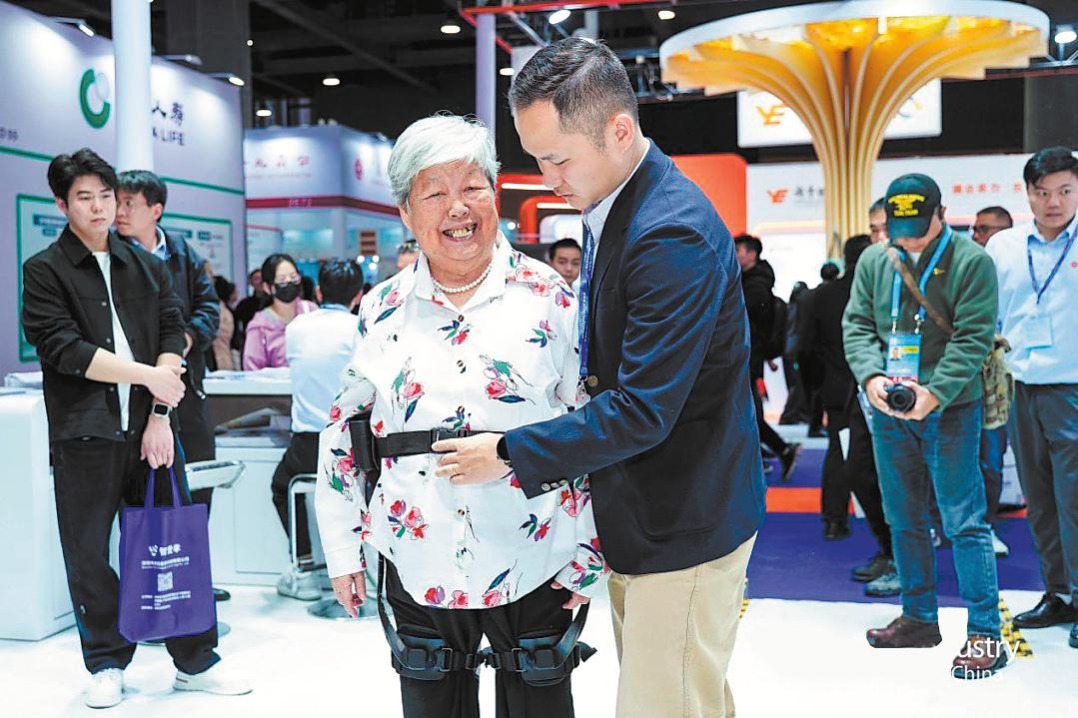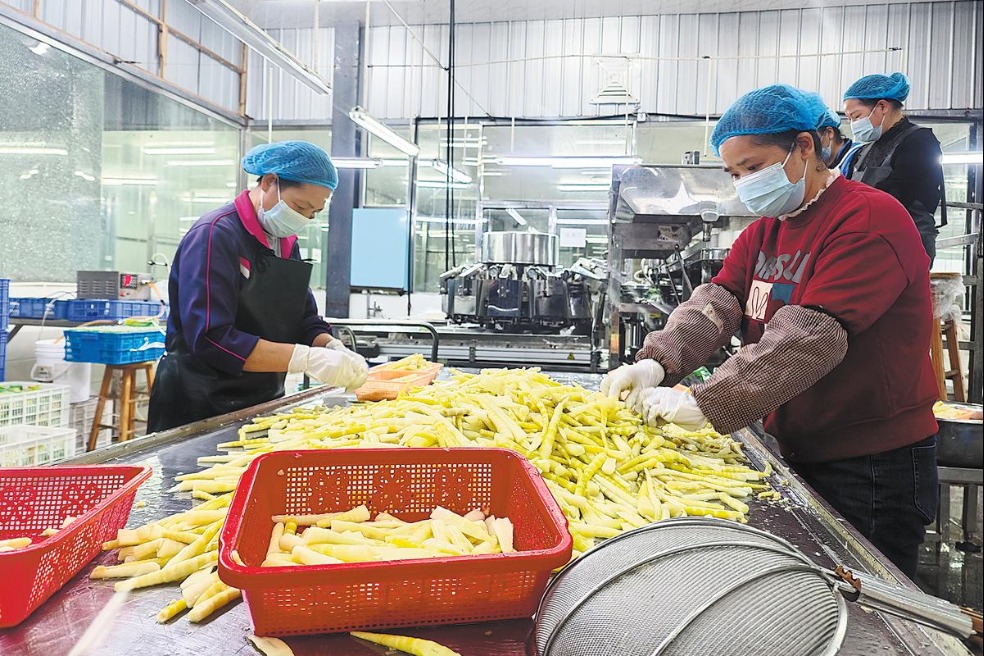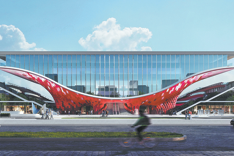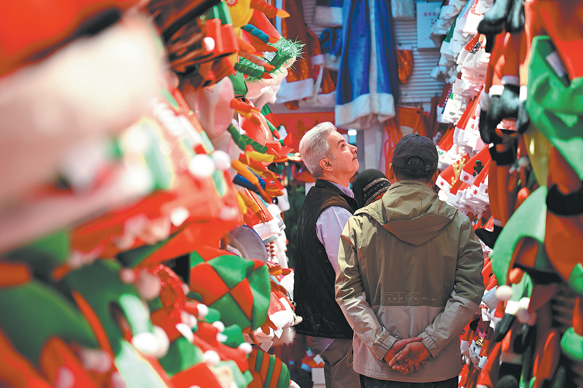Ethnic groups in focus
German documentary maker relishes country's traditions and vitality, Yang Feiyue reports.

Robert Adolf has been diving into his own increasingly bare pocket as he finances and works on a labor of love: China's ethnic diversity and charm.
The 24-year-old German young man speaks fluent Chinese and is putting together a documentary that he hopes will capture the traditional customs and culture of the country's various ethnic groups.
Adolf worked with three colleagues in the Qiandongnan Miao and Dong autonomous prefecture, Southwest China's Guizhou province, in November.
During his stay, he tried out ethnic costumes decorated with batik, a traditional dyeing technique that is especially popular in southern China. He also celebrated the Guzang Festival, a Miao traditional festival, during which ethnic Miao people of Guizhou worship their ancestors once every 13 years. It gave him a valuable insight of how the ethnic group commemorates their forebears and upholds traditional values of caring for the old and the young, loving their neighbor and working hard to provide for their loved ones.
"The Chinese ethnic culture and tradition is so rich and I couldn't help but try and record them all," Adolf says.
He says he is stunned by the diversity in costumes, dialects, food and celebrations among the different ethnic villages.
"It's simply magical, and to think there are 56 ethnic groups in the country," he says.
Over the last six months, Adolf has explored elements of the Tujia, Miao, Dong, Bouyei and Yao people.
Originally from Munich, Adolf was first fascinated by Chinese culture when he watched the Disney animation Mulan as a child.
"The costumes were exotic and the martial arts were incredible," Adolf says.
It predisposed him to China and he soon grabbed a position working in Changde, Central China's Hunan province, in 2017.
He was helping a German company to build a tourism facility in Changde. After the project was completed, Adolf went on to explore the rest of China.
In 2018, he got a job in imports and exports in Lianyungang, East China's Jiangsu province, and he made a point of studying Mandarin. His language skills have come along in leaps and bounds. "When I first came here, I could only say 'hello' and 'thank you' in Chinese," he recalls.
During his free time, he began to make food videos that appealed to a large and appreciative audience.
"I love food, and there is so much gourmet food here, so I recorded the process of making it and tasting it myself," he says.
His account on short-video sharing platform Kuaishou has earned him more than 1.9 million followers.
The online popularity of his work attracted the attention of China Central Television, which invited him to join an agricultural documentary, Global Villager Vlog, in late 2018.
Adolf readily took up the offer and he made his first program in a rural area of Zhoushan, East China's Zhejiang province. He was mesmerized by the life of the fishermen on the island and got to watch them prepare the seafood and then taste the dishes they made.
He went on to explore a mountainous region in Putian, East China's Fujian province, where he went digging bamboo shoots with locals, and learned how the glutinous rice powder is made.
He also enjoyed the full-on hospitality of the villagers.
Those experiences evoked Adolf's yearning for rural life, as he himself was born and grew up in a village.
"I had been meaning to explore the countryside, but didn't get around to it because of the transportation limitations for me as a newcomer," Adolf says.
"The life of the villagers can be a bit labor-intensive, but they are obviously content and happy," Adolf says, adding that he adores the simple lifestyle.
Following the documentary, he continued to work as the host of an online broadcast covering Chinese intangible cultural heritage. He observed at close quarters the Linqing Dragon Lantern in Shandong province. This involves a dragon dance performance that dates back to the Tang Dynasty (618-907) and was listed as a provincial intangible cultural heritage in 2020. While there, he also witnessed the intricate process of making bricks, which were destined for the Forbidden City and are still being used in the maintenance or construction of many other ancient or ancient-style Chinese buildings.
A cultural calling
After Adolf finished filming the online series with CCTV in June, he resolved to make his own documentary that would capture the country's rich ethnic culture.
"I was not so busy, because of the ongoing pandemic abroad, so I figured why not take a break and do what the heart wants," he says.
In July, Adolf planned the documentary with three of his friends, two photographers Liu Ming and Zhu Kewei, as well as Dong Yuze. He acts as the host in front of the camera and engages in non-scripted filming of the authentic life of the ethnic Chinese people.
Adolf even got his driver's license two months before the four embarked on a journey in early September. They drove from Lianyungang across Central China's Hubei province and South China's Guangxi Zhuang autonomous region to Southwest China's Guizhou province.
In Enshi Tujia and Miao autonomous prefecture of Hubei, Adolf enrolled in a Tujia dialect class at a local school.
In Huangluo Yao village, Guangxi's Guilin, he was amazed by women in traditional ethnic costumes, their exquisite hair-grown to more than 1 meter long-and the distinct bamboo barbecues.
In October, in Sandu Sui autonomous county in Guizhou, Adolf went to the bustling village fair and celebrated the Duan Festival. The festival is the major carnival of the year for the Sui people. According to the Sui calendar, it starts in the 12th month and ends in the second month of the following year (around September to the end of October in the Gregorian calendar). It is one of the longest festivals in China, and one where the Sui people offer sacrifices to their ancestors and celebrate the harvest and the coming of the new year.
Adolf was overwhelmed by invitation from local villagers to dine on their distinctive food and rice wine. "I felt like I was a family member," he says.
He also made friends in the process, including ethnic embroidery inheritors and Bouyei singers.
"They are all down-to-earth and sincere, and I feel warmth around them," Adolf says.
He has now shared video clips on various online platforms, including Douyin, Kuaishou and YouTube, where he has garnered praise for his efforts.
Adolf says he has also shared his daily life in China with his family members back home in Germany, who consider his experiences magical.
Dong Yuze from the documentary team admires Adolf's fascination and diligence in covering Chinese culture.
He joined the project due to their shared interests in making short videos and travel.
"He's very into traditional Chinese things," says Dong, who became a friend of Adolf's back in Lianyungang.
"He often looks at ethnic costumes online and he makes some ethnic cultural items himself," Dong adds.
Although the three Chinese team members were contributing to the project for free, Adolf still has to bear other costs of making the documentary.
"We could see he is just following where his interest takes him, without considering any future returns," Dong says.
To date, Adolf and his team have stayed in Guizhou for two months and are full of enthusiasm and motivation as they have found a trove of interesting things to shoot while exploring different village lifestyles.
Afterward, they plan to move on to Hainan and Yunnan provinces to record the myriad ethnic groups based there.
"It is just the beginning of our documentary journey and I'm looking forward to visiting all the other places," Adolf says.



Today's Top News
- Xi's diplomacy in 2025: Shedding light on a world at crossroads
- China to apply lower import tariff rates to unleash market potential
- China proves to be active and reliable mediator
- Three-party talks help to restore peace
- Huangyan coral reefs healthy, says report
- PLA conducts major drill near Taiwan






























